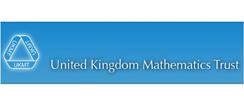- View more resources from this publisher
 United Kingdom Mathematics Trust
United Kingdom Mathematics Trust
2010 Senior Mathematics Challenge
The Senior Mathematical Challenge (SMC), from the United Kingdom Mathematics Trust (UKMT), is a multiple choice contest in which students are presented with five alternative answers, of which just one is correct. It follows that often students can find the correct answers by working backwards from the given alternatives or by showing that four of them are not correct.
This can be a sensible thing to do in the context of the SMC, however, this does not provide a full mathematical explanation that would be acceptable if students were just given the question without any alternative answers.
The challenges are accompanied by solutions. The solutions for each question include a complete solution which does not use the fact that one of the given alternatives is correct. Thus the UKMT have aimed to give full solutions with all steps explained. They therefore hope that these solutions can be used as a model for the type of written solution that is expected in the British Mathematical Olympiad and similar competitions.
Questions are on:
1. Investigating Cube Numbers
2. Algebraic proof
3. Using angle facts
4. Using rules of factors and divisors
5. Using the relationships between rates of flow capacity and time
6. Comparative speeds
7. Investigating permutations
8. Investigating patterns when expanding brackets
9. Using the rules of indices
10. Investigating the areas of squares
11. Finding the median of numbers expressed as surds
12. Investigating areas with given ratios of sides
13. Investigating remainders and using the Lowest Common Multiple
14. Using trigonometry
15. Investigating prime numbers
16. Using Pythagoras’ theorem in a cyclic quadrilateral without using a calculator
17. Using the rules on indices
18. Using Pythagoras’ theorem to find the surface area of prisms
19. Using logical arguments and reasoning to find areas
20. Using fractional algebraic equations in a probability context
21. Using reasoning and trigonometry without a calculator
22. Investigating algebraic manipulation
23. Using reasoning and logical argument for the areas of circles
24. Using Pythagoras’ theorem in the context of volume without a calculator
25. Using combinations and factorials
Show health and safety information
Please be aware that resources have been published on the website in the form that they were originally supplied. This means that procedures reflect general practice and standards applicable at the time resources were produced and cannot be assumed to be acceptable today. Website users are fully responsible for ensuring that any activity, including practical work, which they carry out is in accordance with current regulations related to health and safety and that an appropriate risk assessment has been carried out.
Downloads
-
Challenge 2010 questions 286.39 KB
-
Challenge 2010 solutions 287.23 KB




